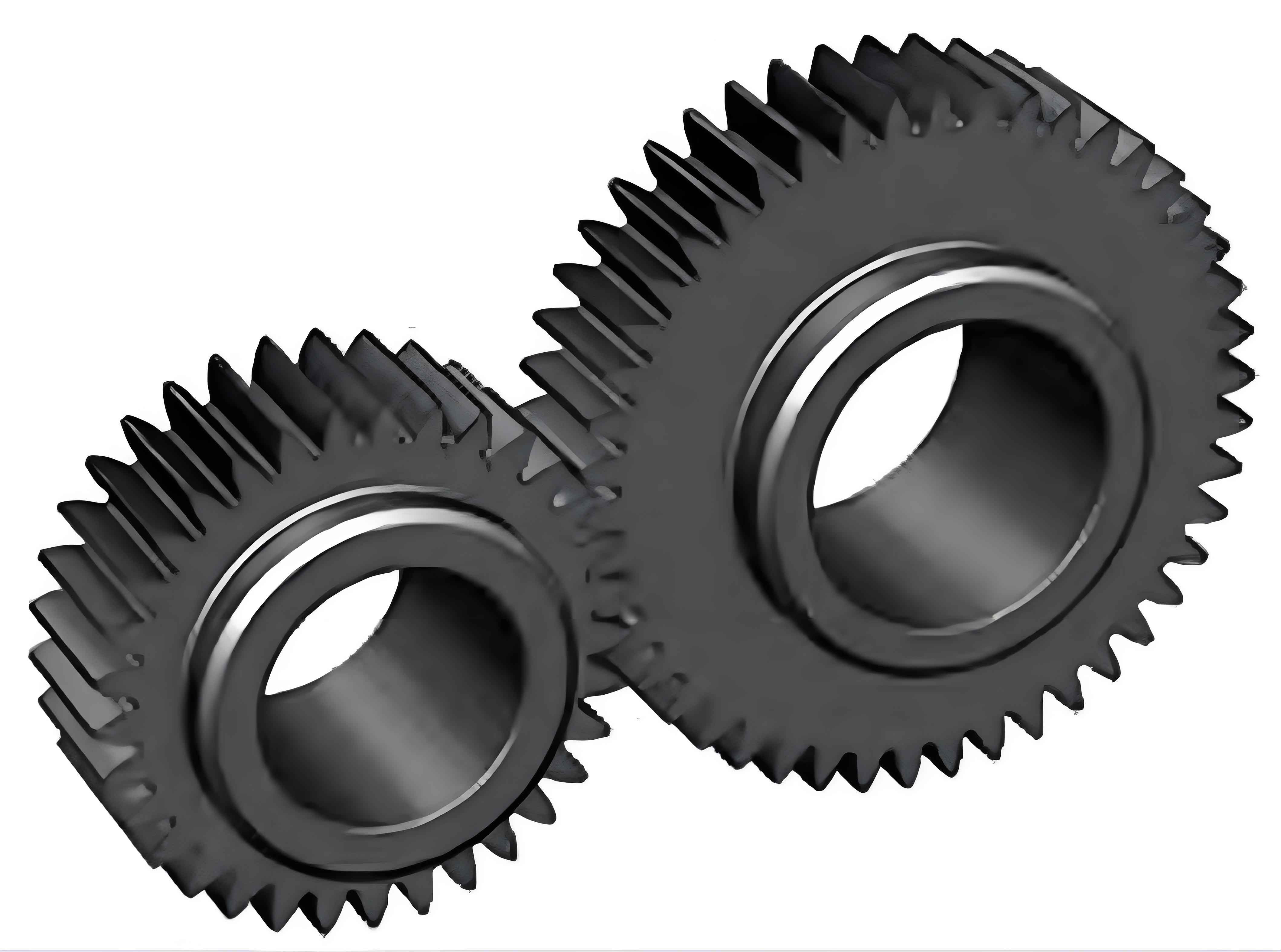Abstract:
The simulation analysis method for the instantaneous cutter-workpiece engagement region (hereinafter referred to as the engagement region) during multi-axis finishing milling of cylindrical spur gear using ball-end cutters, based on 3D solid modeling technology. By establishing spur gear milling motion model, the kinematic relationship between the cutter and the workpiece is accurately described. Based on an accurate model of spur gear tooth profile, the cutter path planning for ball-end cutters is implemented using the equal residual height method. The updated workpiece model is obtained by performing Boolean subtraction between the cutter sweeping volume and the process workpiece model. The engagement region is identified from the updated workpiece geometric model according to the spherical geometric characteristics of the engagement region. The engagement region angle interval is obtained by slicing the engagement region with planes parallel to the cutter axis. Cutting experiments demonstrate that the simulated engagement region results are consistent with actual processing results, verifying the validity and accuracy of the simulation calculations. The accurate extraction of the engagement region between the ball-end cutter and the workpiece lays a foundation for precise prediction of physical quantities such as gear milling forces and tool wear.

1. Introduction
The multi-axis milling of gears using universal five-axis machining centers is widely applied in rapid prototyping of new gears, customized processing of large gears, and gear repair due to its high flexibility [1-2]. Currently, research on multi-axis gear milling mainly focuses on cutter path planning. Guo et al. [3] proposed an enveloping milling method for involute cylindrical gears using end mills, establishing a matching relationship between cutter path planning and tooth surface accuracy characteristics. GUO et al. [4] derived a tooth profile error model for side milling of gears with end mills, studying the influence of tool feed strategies and gear geometric parameters on tooth profile errors. SHI et al. [5] proposed a roughness-constrained cutter path planning method for cylindrical gear milling. ALVAREZ et al. [6] completed spiral bevel gear milling using different processing strategies, achieving cutter path optimization through error analysis. These studies on cutter path planning demonstrate the constraint relationship between tooth surface accuracy and processing parameters from a geometric perspective.
However, in actual processing, the determination of processing parameters is also affected by the physical manifestation of cutting forces. Improper selection of processing parameters often leads to a sharp increase in milling forces, accelerated tool wear, and failure to obtain satisfactory gear surface accuracy and dimensional accuracy. Therefore, achieving precise prediction of cutting forces during gear milling is fundamental to determining and optimizing gear milling parameters. The calculation of cutting forces requires accurate representation of the engagement region. Currently, methods for calculating the engagement region are mainly divided into three types: the solid method, the discrete method, and the analytical method.
Table 1: Comparison of Engagement Region Calculation Methods
| Method | Description | Advantages | Disadvantages |
|---|---|---|---|
| Solid Method | Determined through Boolean operations between the tool and workpiece solid models | High calculation accuracy, suitable for three-axis processing | – |
| Discrete Method | Determined by judging whether the discretized tool and workpiece intersect | High calculation efficiency | Low calculation accuracy due to discretization |
| Analytical Method | Represents the engagement region using spatial curves and solves through dimensionality reduction | High calculation efficiency under certain accuracy requirements | Complex and cumbersome calculation process |
2. Mathematical Model of Spur Gear Milling Process
2.1 Definition of Coordinate Systems
To accurately describe the relative position relationship between the tool and the workpiece during gear milling, a coordinate system as shown in Figure 1 is established.
Figure 1: Reference Coordinate Systems for Spur Gear Milling Motion
(Insert an image depicting the axometric view, right view, and top view of the reference coordinate systems)
Table 2: Description of Coordinate Systems
| Coordinate System | Abbreviation | Description |
|---|---|---|
| Workpiece | {SW} | Base coordinate system for describing the workpiece geometric model and tool motion |
| Feed Motion | {SF} | Describes the tool feed motion, with its origin at the ball center of the ball-end cutter |
| Tool | {ST} | Fixed at the tool ball center, coinciding with the origin of {SF} |
2.2 Transformation Matrices
To describe the engagement angles (entry and exit) in the tool coordinate system {ST}, but calculate them in the workpiece coordinate system {SW}, the transformation relationship between the two needs to be described.
The homogeneous coordinate transformation matrix of {ST} relative to {SF} is:
MTF=10000cosλk−sinλk00sinλkcosλk00001
The homogeneous coordinate transformation matrix of {SF} relative to {SW} is:
MFW=10000cosβksinβk00−sinβkcosβk00001
Conclusion
This paper focuses on spur gear and implements simulation analysis of the cutter-workpiece engagement region during the milling process based on the solid modeling method. Firstly, based on spur gear milling motion model and the mathematical model describing the tooth profile to be machined, spur gear milling cutter path is planned using the equal residual height method. Secondly, the cutter sweeping volume is constructed, and the workpiece geometric model is updated through Boolean operations between the sweeping volume and spur gear workpiece geometric model. Spur gear milling engagement region is identified on the updated workpiece geometric solid model, thereby determining the entry and exit angles. Finally, the effectiveness and accuracy of the proposed method are verified by comparing the engagement region results after actual processing with simulation results.
